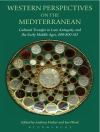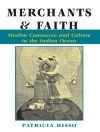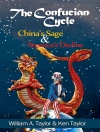The Manhattan Project—the World War II race to produce an atomic bomb—transformed the entire country in myriad ways, but it did not affect each region equally. Acting on an enduring perception of the American West as an “empty” place, the U.S. government located a disproportionate number of nuclear facilities—particularly the ones most likely to spread pollution—in western states. The Manhattan Project manufactured plutonium at Hanford, Washington; designed and assembled bombs at Los Alamos, New Mexico; and detonated the world’s first atomic bomb at Alamagordo, New Mexico, on June 16, 1945.
In the years that followed the war, the U.S. Atomic Energy Commission selected additional western sites for its work. Many westerners initially welcomed the atom. Like federal officials, they, too, regarded their region as “empty, ” or underdeveloped. Facilities to make, test, and base atomic weapons, sites to store nuclear waste, and even nuclear power plants were regarded as assets. By the 1960s and 1970s, however, regional attitudes began to change. At a variety of locales, ranging from Eskimo Alaska to Mormon Utah, westerners devoted themselves to resisting the atom and its effects on their environments and communities. Just as the atomic age had dawned in the American West, so its artificial sun began to set there.
The Atomic West brings together contributions from several disciplines to explore the impact on the West of the development of atomic power from wartime secrecy and initial postwar enthusiasm to public doubts and protest in the 1970s and 1980s. An impressive example of the benefits of interdisciplinary studies on complex topics, The Atomic West advances our understanding of both regional history and the history of science, and does so with human communities as a significant focal point. The book will be of special interest to students and experts on the American West, environmental history, and the history of science and technology.
Daftar Isi
Acknowledgments
The Atomic West: Region and Nation, 1942-1992 – Bruce Hevly and John Findlay
I. BUILDING A FEDERAL PRESENCE
Grand Coulee and Hanford: The Atomic Bomb and the Development of the Columbia River – Robert Ficken
General Groves and the Atomic West: The Making and Meaning of Hanford – Stanley Goldberg
Building the Atomic Cities: Richland, Los Alamos, and the American Planning Language -Carl Abbott
II. THE ATOMIC ENERGY COMMISSION AT WORK
The University of California, the Federal Weapons Labs, and the Founding of the Atomic West – Greg Herken
James L. Tuck: Scientific Polymath and Eternal Optimist of the Atomic West – Ferenc Szasz
‘Hotter Than a $2 Pistol’: Fallout, Sheep, and the Atomic Energy Commission, 1953-1986 – Barton Hacker
III. LOCAL RESISTANCE
Alaska and the Frecracker Boys: The Story of Project Chariot – Dan O’Neill
Radical Initiatives and Moderate Alternatives: California’s 1976 Nuclear Safeguards Initiative – Thomas Wellock
Antinuclear Activism in the Pacific Northwest: WPPSS and Its Enemies – Daniel Pope
Air Force, Western Shoshone, and Mormon Rhetoric of Place and the MX Conflict – Matthew Glass
Contributors
Index
Tentang Penulis
John M. Findlay is Professor Emeritus of History at University of Washington. He is the author of People of Chance: Gambling in American Society from Jamestown to Las Vegas (Oxford University Press, 1986); Magic Lands: Western Cityscapes and American Culture after 1940 (University of California Press, 1992); and Atomic Frontier Days: Hanford and the American West, with Bruce Hevly (University of Washington Press, 2011). He has also co-edited three multi-author volumes that had their origins as symposia at the University of Washington’s Center for the Study of the Pacific Northwest: The Atomic West, eds. Bruce Hevly and John M. Findlay (1998); Power and Place in the North American West, eds. Richard White and John M. Findlay (1999); and Parallel Destinies: Canadians, Americans, and the Western Border, eds. John M. Findlay and Ken Coates (2002).












